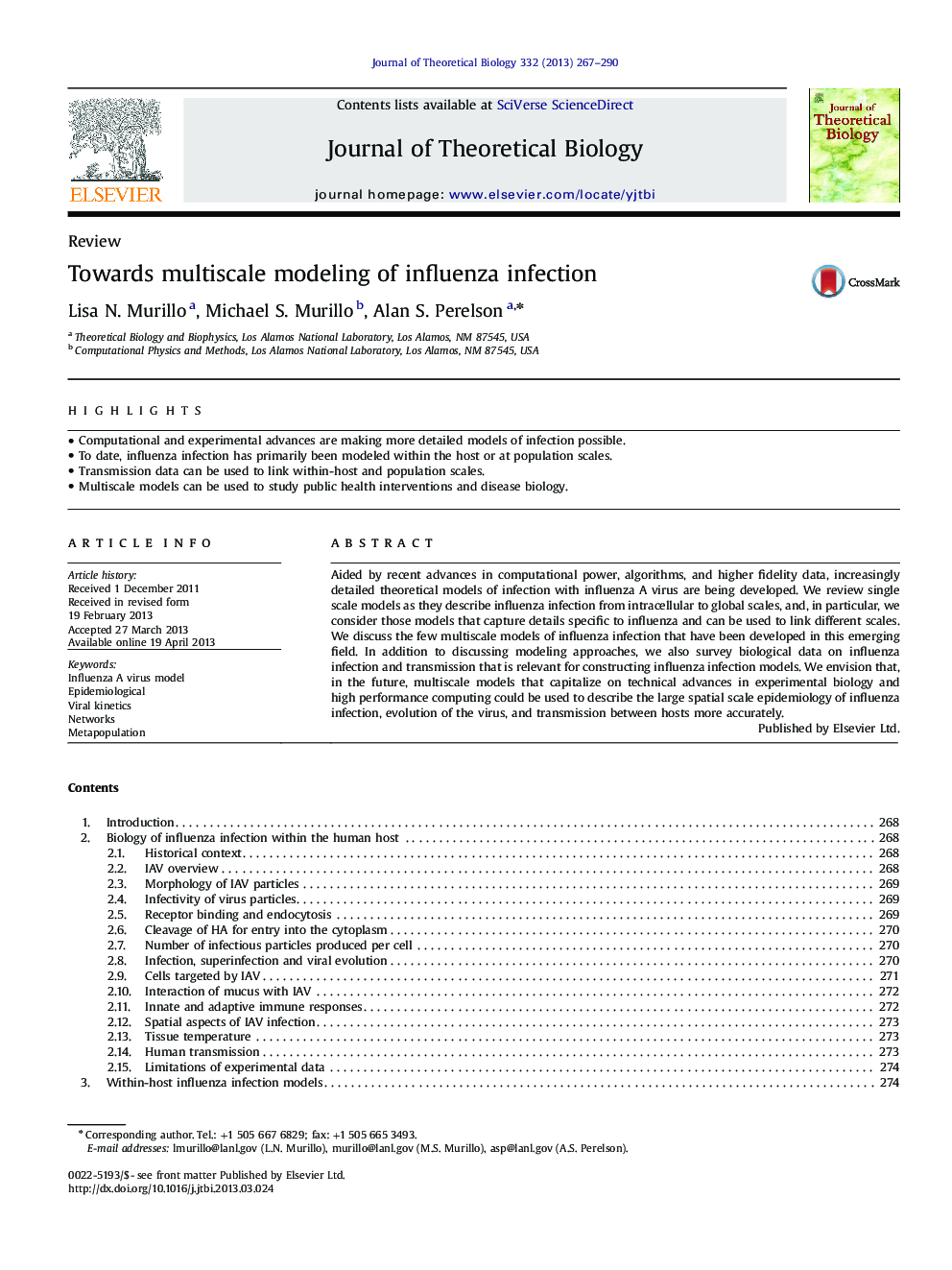| Article ID | Journal | Published Year | Pages | File Type |
|---|---|---|---|---|
| 4496355 | Journal of Theoretical Biology | 2013 | 24 Pages |
•Computational and experimental advances are making more detailed models of infection possible.•To date, influenza infection has primarily been modeled within the host or at population scales.•Transmission data can be used to link within-host and population scales.•Multiscale models can be used to study public health interventions and disease biology.
Aided by recent advances in computational power, algorithms, and higher fidelity data, increasingly detailed theoretical models of infection with influenza A virus are being developed. We review single scale models as they describe influenza infection from intracellular to global scales, and, in particular, we consider those models that capture details specific to influenza and can be used to link different scales. We discuss the few multiscale models of influenza infection that have been developed in this emerging field. In addition to discussing modeling approaches, we also survey biological data on influenza infection and transmission that is relevant for constructing influenza infection models. We envision that, in the future, multiscale models that capitalize on technical advances in experimental biology and high performance computing could be used to describe the large spatial scale epidemiology of influenza infection, evolution of the virus, and transmission between hosts more accurately.
